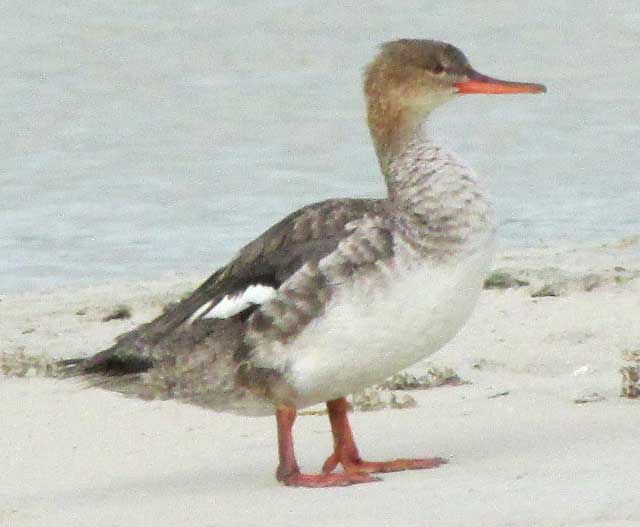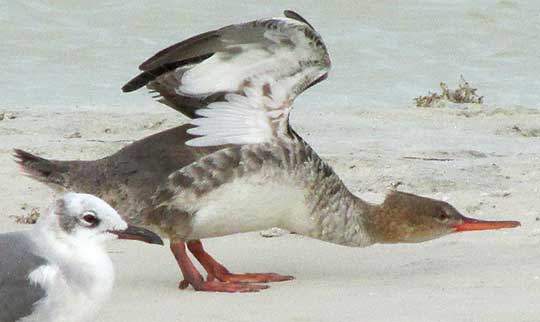Excerpts from Jim Conrad's
Naturalist Newsletter

from the the February 15, 2015 Newsletter issued from Río Lagartos, on the north-central coast of Yucatán, MÉXICO
RED-BREASTED MERGANSER
At low tide a mud bar barely above the estuary's waters was so loaded with Laughing Gulls it looked ready to sink. But one bird wasn't a Laughing Gull. Standing a bit apart, it was gawkily looking around like it'd just arrived, and maybe it had. It was a duck, but not a usual one. That's it above.
With such a long, slender beak and the beginnings of a swooped-back head crest, it couldn't be anything but a merganser. But mergansers don't typically turn up here. The Yucatan Peninsula is way beyond their usual overwintering grounds, though sometimes a few winter vagrants do show up unexpectedly, so this is one of them, and no wonder the duck was so watchful.
Like most other overwintering birds here, this one's plumage was that of the immature or female, so there was the matter of figuring out which of the three North American merganser species this might be. For a split second our bird afforded a different view of its field marks by lifting its wings and stretching forward to take a poop, as shown below:

The Common Merganser was disqualified as a possibility because in that species the brownish head and upper neck make a more abrupt transition to the grayish lower neck than our bird shows. Also, Common Mergansers are more inland birds, and more restricted to the north. Of the three species, that's the least likely to occur here.
So, is it the Red-breasted or Hooded Merganser? The Hooded's bill is dark, not reddish, plus it is smaller and more slender than this bird's. This is the Red-breasted Merganser, MERGUS SERRATOR.
Red-breasted Mergansers dive and swim underwater. They mainly eat small fish, but also aquatic insects, crustaceans, and frogs. Our American birds nest from Alaska across Canada to Canada's eastern coast, and the contiguous US. The same species also occurs across northern Eurasia from Greenland and England to far eastern Russia, overwintering in places like Greece and the eastern coast of China.
With such a wide-ranging species maybe it's to be expected that a few individuals sometimes show up where they're not expected, gawkily looking around and taking a quick poop, before moving on.